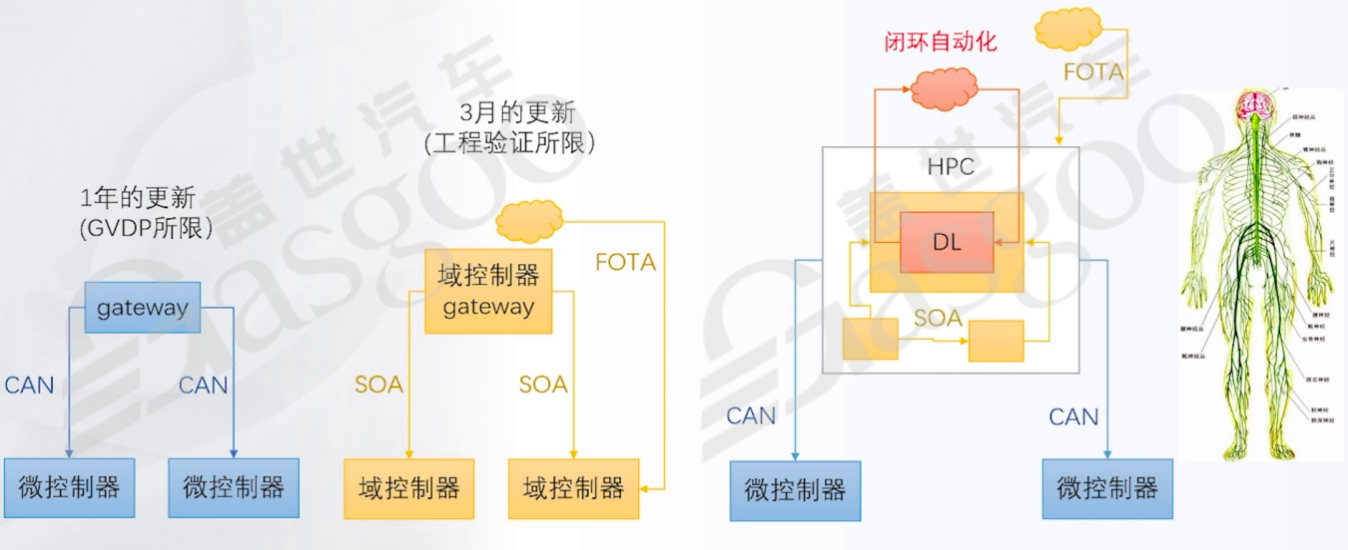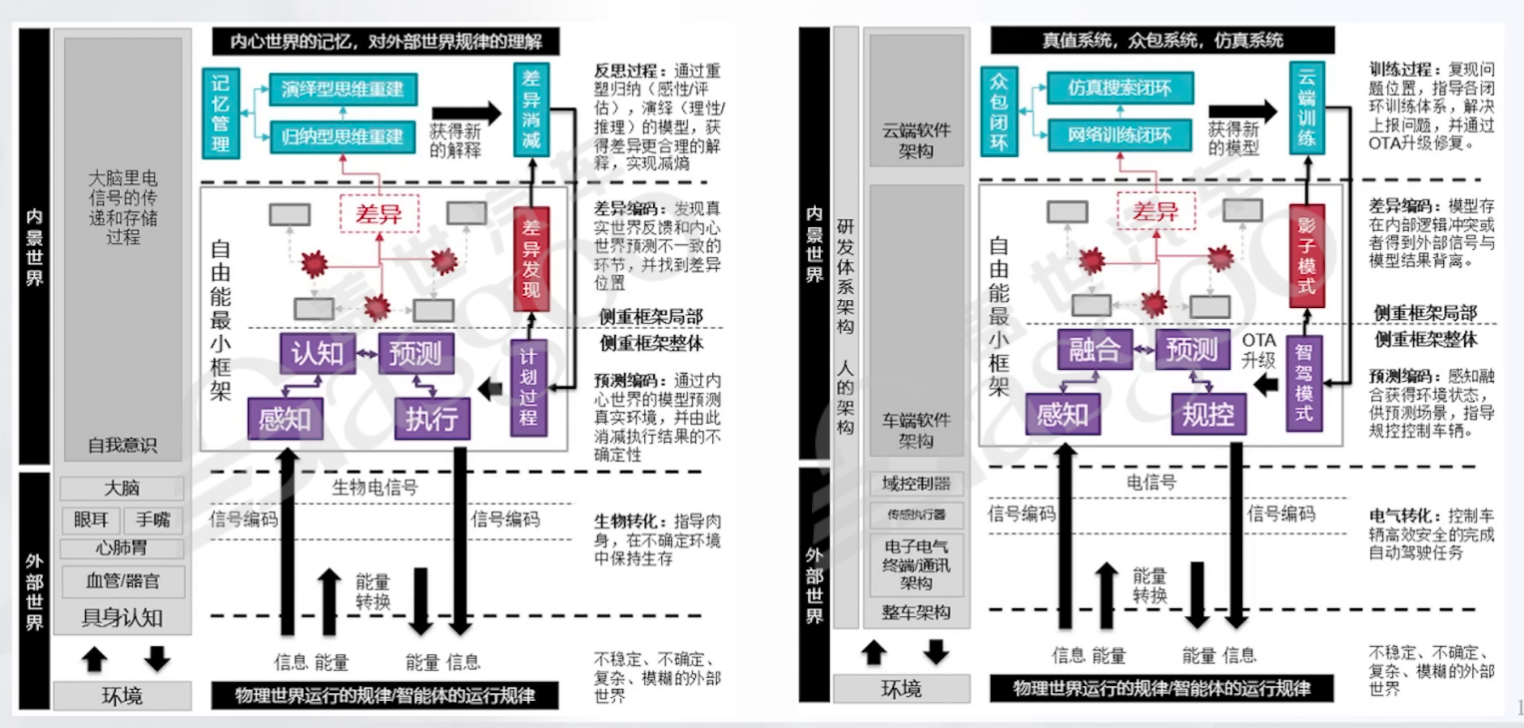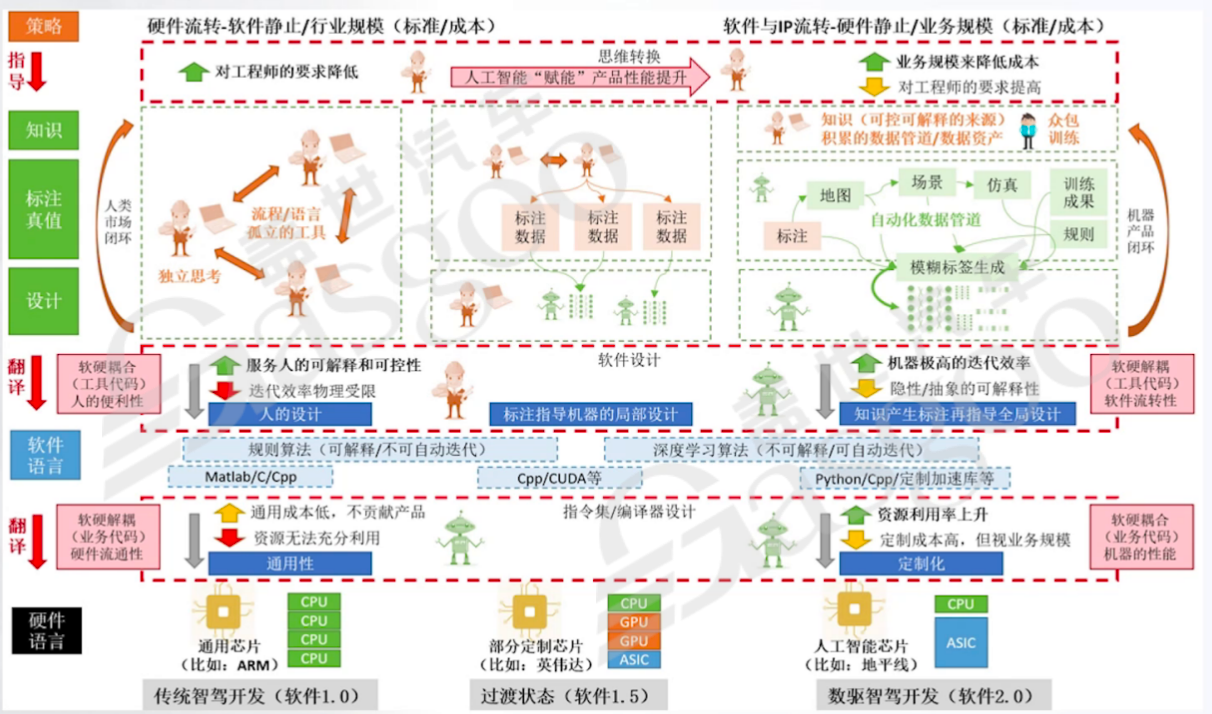As the complexity of systems continues to increase and development cycles shorten significantly, the quality standards must not be compromised. Traditional methodologies are struggling to meet these challenges. In this context, the automotive industry is undergoing a profound transformation in methodology, which reflects a fundamental shift from traditional mechanical thinking to intelligent agent thinking. Traditionally, the automotive industry viewed cars as reliable transportation tools, focusing primarily on the stability of product quality, with distributed architecture being a typical product of this mindset. At that time, vehicles had fixed and singular functionalities, and the R&D process centered around optimizing mechanical performance, placing the industry in a relatively stable 'comfort zone.' However, with the rise of domain control architecture and centralized architecture, the positioning of vehicles has undergone a qualitative leap. The emergence of advanced driver-assistance systems (ADAS) and intelligent cockpits has endowed vehicles with new functionalities; the ultimate vision of ADAS is to replace the driver, striving for autonomous driving, while intelligent cockpits serve as in-vehicle service providers, offering passengers a smart experience. The development of these two functionalities drives the evolution of vehicles from mere transportation tools to the 'bodies' of intelligent agents, expanding the industry's vision to build intelligent products equipped with robotic logic. The trend of integration between the automotive and robotics industries is becoming more pronounced, with many automakers venturing into the robotics field, and companies like Tesla achieving significant software reuse between vehicles and robots. This cross-industry integration confirms the objective reality of the automotive evolution towards robotics and marks the industry's entry into a new stage of 'software-defined vehicles.' In this phase, the architecture of vehicles needs to develop towards organic and hierarchical structures to lay the groundwork for software iterations; the prevalence of centralized architecture further shifts the industry focus towards building autonomous software iteration capabilities, seeking to reduce manual intervention and enable direct interaction with users.
Paradigm Shift and Technological Iteration in the Era of Smart Vehicles

Images


Share this post on: